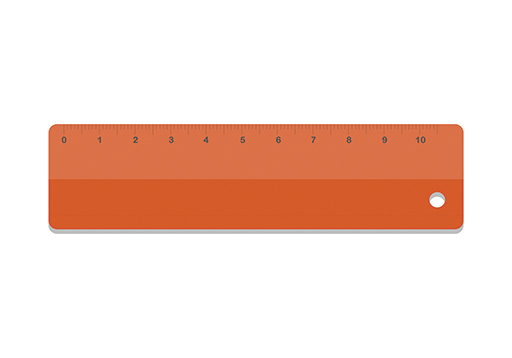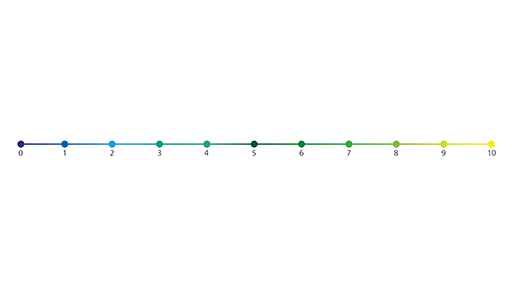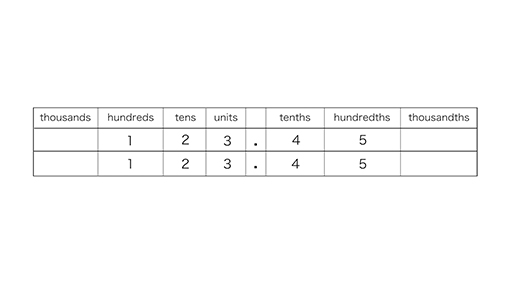4.2 Becoming familiar with decimals
Adding and subtracting decimals can be done using the same methods as adding and subtracting whole numbers as long as the digits are lined up under the correct column headings, keeping the decimal points underneath each other.
Learners can struggle to handle decimals, so it is helpful to use real-life instances with which the learners are familiar.
Numbers with one decimal place are evident on a classroom ruler set out in centimetres (Figure 6).

There are 10 gradations between each whole number (of centimetres), so each interval is 1 tenth or 0.1. Rulers are effective number lines which learners have easy access to.
A useful activity to use with learners who struggle with decimals is to ask them to draw a straight line across a page. Next, they should put a mark near the beginning and label it A. Ask them to put another mark 4.2 centimetres along the line from A and to label it B. Next ask them to put another mark 2.9 centimetres along the line from B and label it C. Now ask them to measure from A to C. Then ask how they can check their answer (i.e. add up 4.2 and 2.9). This activity (and you can use more than 2 measurements) is useful in encouraging the accurate use of a ruler and measuring and working with decimals.
Numbers with two decimal places will be familiar to your learners through the use of money. Having said this, today many people use contactless card payments and may not even think about their transactions in terms of exchanges of money. Yet, I often used to say to my learners ‘think of two decimal place numbers as money’ and it helped them to feel they could cope with the calculations.
Now watch Video 7 for more advice on decimal number lines.

Transcript: Video 7 Decimal number lines with 1, 2 and 3 decimal places
Since we use a number system in base ten, special things happen when you multiply or divide by powers of 10. A place value table is useful for explaining what happens. Now watch Video 8 for more information on using a place value diagram.

